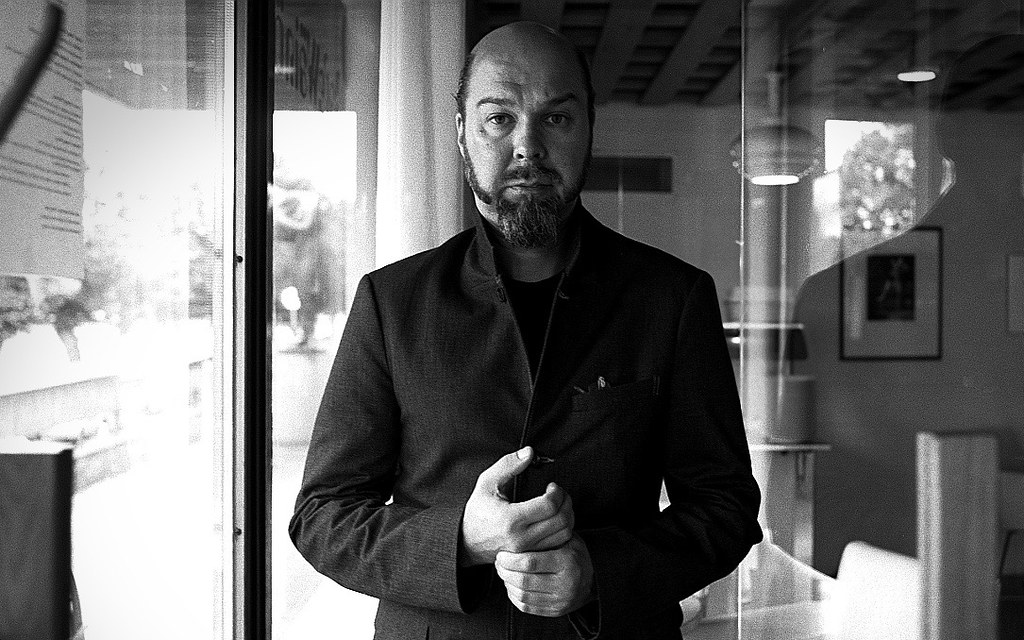Echo Spaces // Mika Vainio

In 1993, Mika Vainio sowed the seeds of change for electronic music. He first formed Pan Sonic together with Ilpo Väisänen and Sami Salo before Salo's departure three years later and over 20 years, the pair experimented with pushing the industrial noise styles of Throbbing Gristle, Einstürzende Neubauten and Suicide into the 21st Century. Rather than cacophonies of clattering metal and screams, the duo projected industrial sounds through twisted home-made synthesisers and effect units. At the height of their notoriety, the pair even collaborated with avant-garde legends Keiji Haino and Merzbow. 1993 was also the year Vainio set up the Sähkö imprint with Tommi Grönlund. Sähkö — Finnish for ‘electricity’ — became a label responsible for spearheading the return of minimalism in electronic music. At the time of rave, jungle and breakbeat, Sähkö kept the tempos and moods low. But his solo projects, most famously Ø and Philus, are his most influential. Following the sad passing of Vainio last week, we chose three of our favourite records to celebrate his legacy.
###Ø - Metri
It’s unsurprising that some of Vainio’s strongest work came at the start of his career. Everything about the Ø project channelled an antithetical approach to music. Unlike the flashy DJ names of the 90s, Vainio’s seemingly unpronounceable moniker, signified... nothing. In mathematics, Ø represents an ‘empty set’, that is; a set containing no elements. In linguistics, it symbolises an unspoken element of speech, something left unsaid. Ironically, this speaks volumes about Vainio’s own aesthetic philosophy. Vainio elevates silence and space, and manipulates them as if they were their own musical instruments. Almost every aspect of this record has been surgically stripped of its fat. Take ‘Twin Bleeps’ or ‘Halli’, pieces so stark in composition that they sounds more like science experiments than music.###Mika Vainio - Aíneen Musta Puhelin / Black Telephone Of Matter
Vainio’s 4th solo album on UK imprint Touch deserves isolated listening. Vainio’s matchless agility with sound comes through in subtle silences and tone shifts that defy the volume reliance of noise as a genre. Split into seven haunting chapters, the album instead requires you to strain your ears to hear its sonic minutiae. The opening track, "Roma A.D. 2727," introduces his dystopian post-industrial collage with a sub-bass that rumbles amidst sharp interruptions of white noise. The influence of the 20th Century Avant-Garde is evident in the musique concrète highlight; "Silences Traversés Des Mondes Et Des Anges," with its thunderous backdrop of coastal rain and trill of birds flocking in the sky.###Ø - Heijastuva
_Heijastuva_ - ‘reflected’ in Finnish - introduced an unlikely feature into Vainio’s work: guitars. This is no mean feat, since guitars and ambient have often been bedfellows for the worst excesses of prog-wankery. Think of the sappy indulgences of David Gilmour or the early Manuel Göttsching. But _Heijastuva_ is different. Much like the rest of Vainio’s music, the sounds here are modest and understated. Simple refrains swell and merge together, taking you under their hypnotic spell through seductive simplicity. I once heard this album described as being like “swimming inside of your limbic system”, with all memory and moods floating around one another. Indeed, _Heijastuva_’s title track offers the perfect elegy for Vainio’s life, as nostalgic refrains ebb and flow like the passing of time. It’s a piece written to facilitate one thing: reflection.- Published
- Apr 17, 2017
- Credits
- Words by jo_and_george
